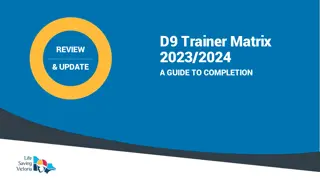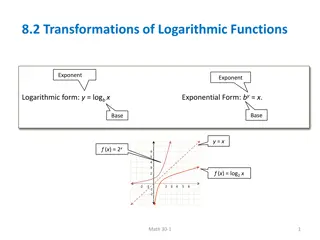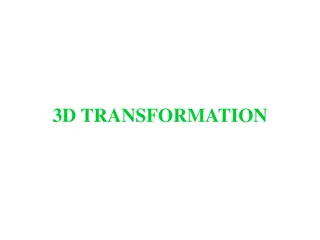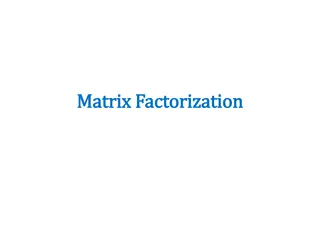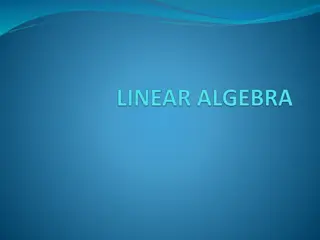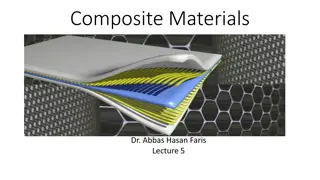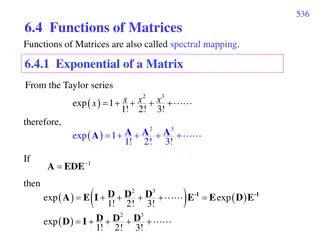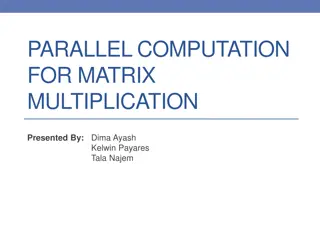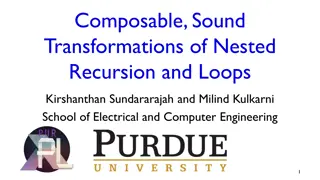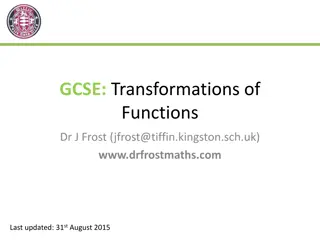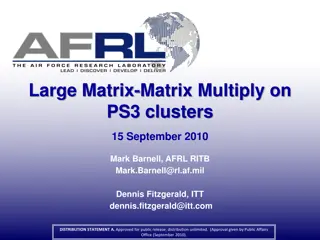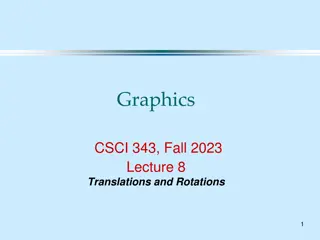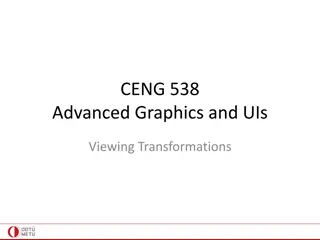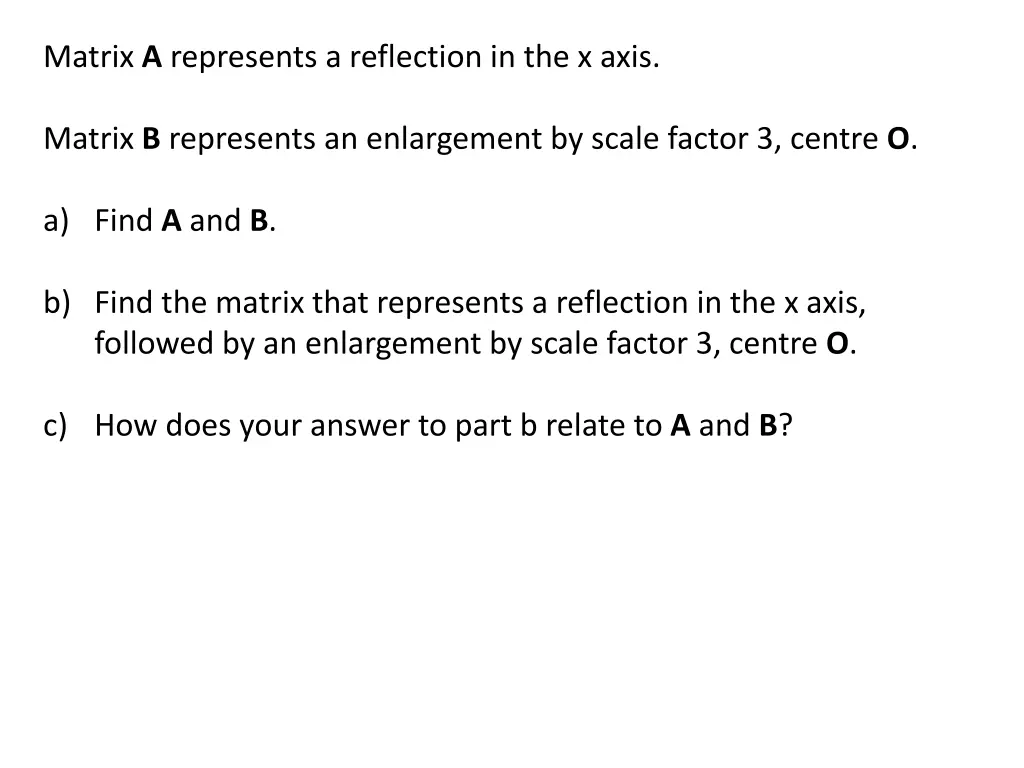
Matrix Transformations: Combinations and Applications
Explore matrix transformations involving reflections, enlargements, rotations, and more. Understand how to combine matrices to achieve complex transformations. Dive into examples and explanations to enhance your understanding of linear algebra concepts.
Download Presentation

Please find below an Image/Link to download the presentation.
The content on the website is provided AS IS for your information and personal use only. It may not be sold, licensed, or shared on other websites without obtaining consent from the author. If you encounter any issues during the download, it is possible that the publisher has removed the file from their server.
You are allowed to download the files provided on this website for personal or commercial use, subject to the condition that they are used lawfully. All files are the property of their respective owners.
The content on the website is provided AS IS for your information and personal use only. It may not be sold, licensed, or shared on other websites without obtaining consent from the author.
E N D
Presentation Transcript
Matrix A represents a reflection in the x axis. Matrix B represents an enlargement by scale factor 3, centre O. a) Find A and B. b) Find the matrix that represents a reflection in the x axis, followed by an enlargement by scale factor 3, centre O. c) How does your answer to part b relate to A and B?
Matrix A represents a reflection in the line y = x. Matrix B represents a reflection in the y axis. a) Find A and B. b) Find the matrix that represents a reflection in the line y = x, followed by a reflection in the y axis. c) Find the matrix that represents a reflection in the y axis, followed by a reflection in the line y = x. d) How do your answers to parts b and c relate to A and B?
Combined transformations. If two transformations are represented by matrices A and B , then the transformation represented by A followed by the transformation represented by B is represented by BA. This is because for any vector x, B operates on Ax Example: Find the matrix which represents the combined transformation of a rotation 180 about the origin, followed by a reflection in the line y = x
Example: Find the matrix which represents the combined transformation of a rotation 180 about the origin, followed by a reflection in the line y = x
3 0 0 3 0 1 1 0 1 0 0 0 1 1 0 ? = ,? = ,? = ??? ? = 1 i) Describe the transformations that are represented by A, B, C and D. ii) Find the following matrix products and describe the single transformations represented in each case: ?) ?? ?) ?? ?) ?? ?) ?? ?) ??? ?) ???? iii) Write down two other matrix products, using A, B, C and D, which would produce the same single transformation as ????
The transformations R and S are represented by the matrices 2 1 1 3 3 0 4 ? = ??? ? = 2 i) ii) Find the matrix which represents the transformation RS Find the image of the point (3, -2) under the transformation RS
0 3 0 is equivalent to a The transformation represented by ? = 1 single transformation B followed by a single transformation A. Give geometrical descriptions of a pair of possible transformations B and A and state the matrices that represent them. Either: A rotation 90 clockwise about O followed by a stretch by scale factor 3 parallel to the x axis 3 0 0 1 0 1 0 0 3 0 = 1 1 Or: A stretch by scale factor 3 parallel to the y axis followed by a rotation 90 clockwise about O. 0 1 0 1 0 0 3 0 3 0 = 1 1
Work: Integral Exercise One Q5 Integral Exercise Two

